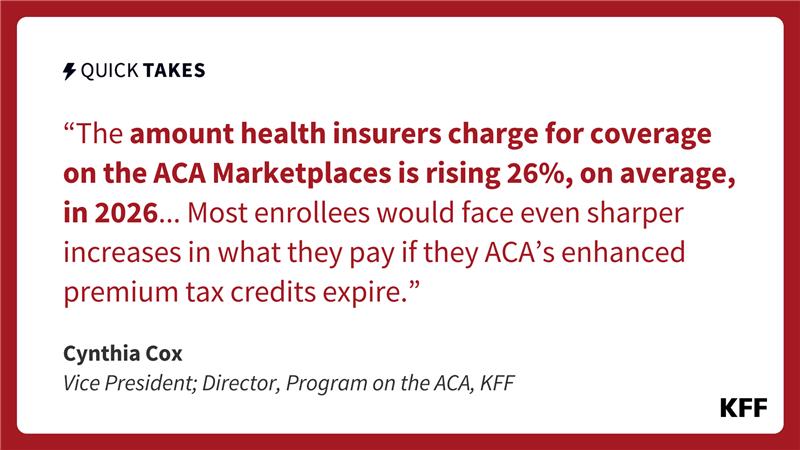Eric
Mama's lil stinker
- Joined
- Aug 10, 2020
- Posts
- 15,008
- Solutions
- 18
- Main Camera
- Sony
People making around $55,000 per year would pay an additional $1400 per month
People making around 90,000 a year will see an increase of $4000 per month
Thinking at this point opting out and paying out of pocket seems like a cheaper alternative. Nobody hates their own citizens more than America.

 www.kff.org
www.kff.org
Most enrollees would face even sharper increases in what they pay if the ACA’s enhanced premium tax credits expire. This 26% is the increase in the amount insurers are charging, which in most cases is not what enrollees pay. 22 million out of 24 million marketplace enrollees currently receive a tax credit. The amount subsidized enrollees pay is not what insurers charge, but rather a sliding-scale share of their household income, based on a formula set by Congress. If Congress extends the enhanced tax credits, the amount subsidized enrollees pay each month will remain about the same, even though the amount insurers are charging is increasing sharply.
If the enhanced premium tax credits expire at the end of this year, KFF estimates that currently subsidized enrollees will see their monthly premium payments more than double, increasing by about 114%, on average. This reflects people with incomes below four times the poverty level receiving less financial assistance and those with incomes over four times poverty no longer being eligible for financial assistance at all and therefore being hit by a double whammy of lost tax credit and higher insurer premiums.
People making around 90,000 a year will see an increase of $4000 per month
Thinking at this point opting out and paying out of pocket seems like a cheaper alternative. Nobody hates their own citizens more than America.

ACA Insurers Are Raising Premiums by an Estimated 26%, but Most Enrollees Could See Sharper Increases in What They Pay
The amount health insurers charge for coverage on the ACA Marketplaces is rising 26%, on average, in 2026.... Most enrollees would face even sharper increases in what they pay if they ACA’s enhanced premium tax credits expire.
Most enrollees would face even sharper increases in what they pay if the ACA’s enhanced premium tax credits expire. This 26% is the increase in the amount insurers are charging, which in most cases is not what enrollees pay. 22 million out of 24 million marketplace enrollees currently receive a tax credit. The amount subsidized enrollees pay is not what insurers charge, but rather a sliding-scale share of their household income, based on a formula set by Congress. If Congress extends the enhanced tax credits, the amount subsidized enrollees pay each month will remain about the same, even though the amount insurers are charging is increasing sharply.
If the enhanced premium tax credits expire at the end of this year, KFF estimates that currently subsidized enrollees will see their monthly premium payments more than double, increasing by about 114%, on average. This reflects people with incomes below four times the poverty level receiving less financial assistance and those with incomes over four times poverty no longer being eligible for financial assistance at all and therefore being hit by a double whammy of lost tax credit and higher insurer premiums.
